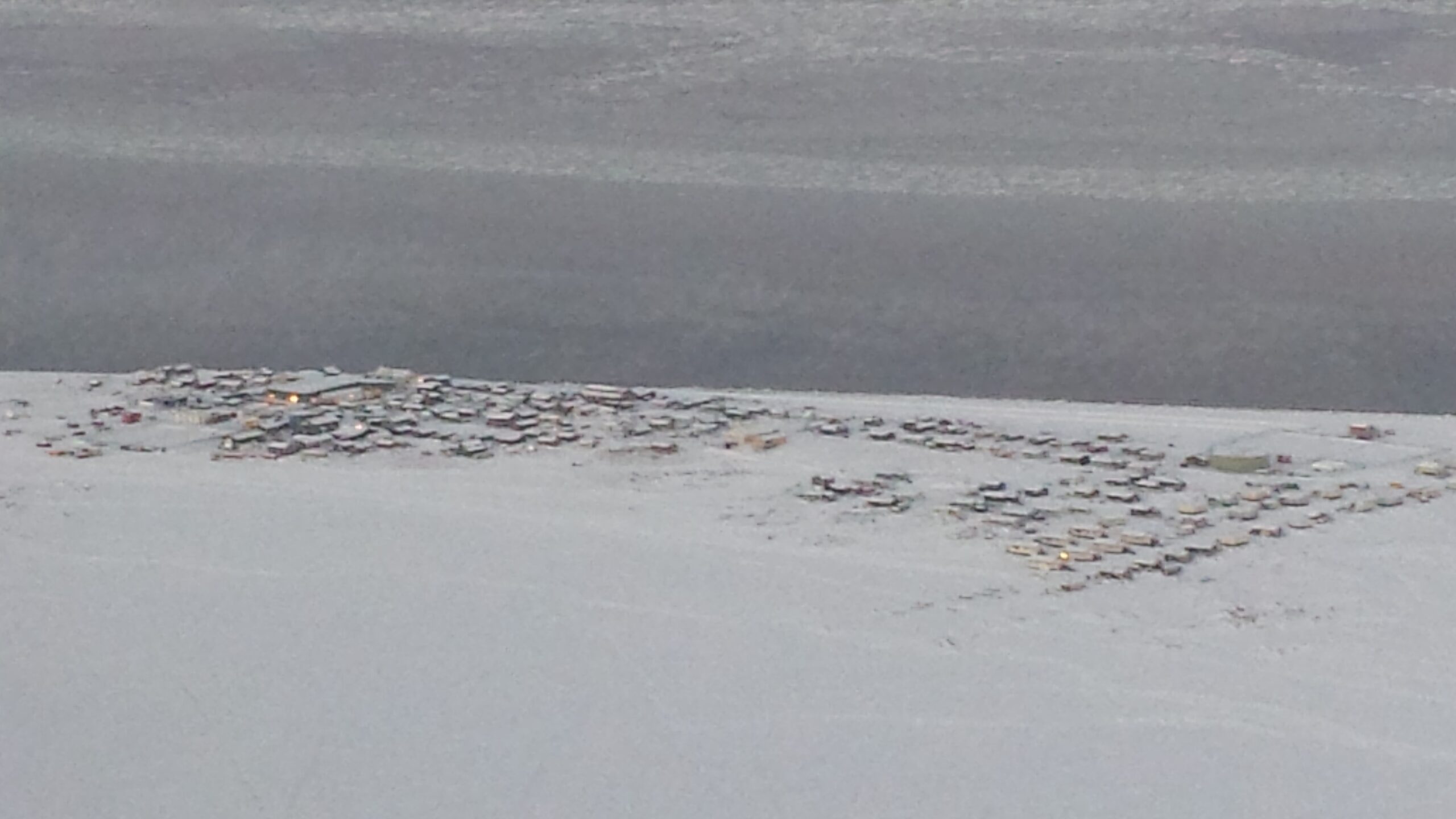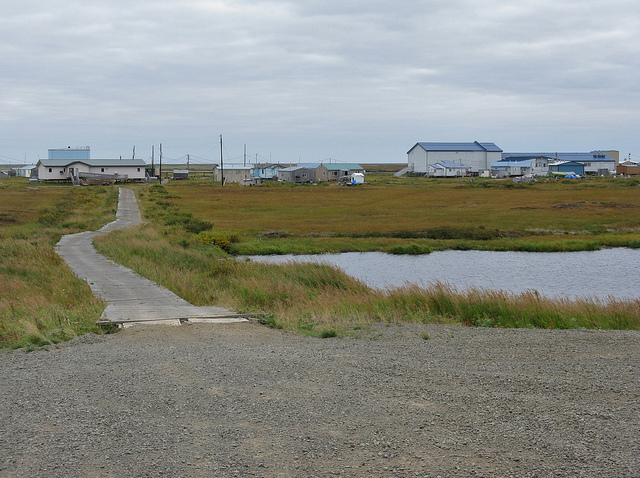Coastal erosion and community relocation in Newtok, Alaska

Case study basic information
Location: Newtok, Alaska
Time frame: 1984-present
Drivers: climate change, geopolitics
Summary
Rising temperatures and changes in precipitation patterns are causing changes in biophysical systems across the Arctic. Along parts of the Alaskan coastline, warmer temperatures are causing both permafrost and sea ice to melt or preventing formation. This affects soil stability along the coast and the lack of sea ice causes larger waves to form. New weather patterns also include extreme weather events, such as storms. All these factors combined have increased the magnitude of river and coastal erosion as well as the occurrence of floods (1, 2).
The sedentarisation of Alaskan indigenous communities resulting from the creation of a formal educational system in the late 19th-early 20th century contributed to reducing their capacity to adapt to the changing Arctic environment (3). Recent environmental trends are further increasing their vulnerability. For example, in Newtok, community public health is deteriorating, as many facilities have been damaged, and new ones cannot be built due to instability of the soil (2).
The Newtok Traditional Council has been working for a relocation of the village as an adaptation strategy to the changing biophysical conditions, which include melting sea ice, melting permafrost, floods and salt water intrusion (2). Erosion protection infrastructure has been built, but this is only a temporary solution. An evaluation of the impacts of biophysical disturbances has brought the U.S. Army Corps of Engineers to identify at least twelve communities in Alaska that need to be relocated due to climate change (2).
However, because of cultural, financial and jurisdictional factors, relocation is a very delicate and complex process. For instance, the suggestion that community members could relocate to nearby villages has generated opposition due to fear that this would greatly harm the community identity (2). Indeed, the culture and sense of identity is directly tied to the places where the people have lived for generations, through traditions, stories, language etc. (4).
A great challenge is that there lacks an institutional framework within the U.S. that can be applied when relocating an entire community. No national, state, local or tribal government agency has thus the legal authority to relocate communities and this has greatly impeded the relocation process (2, 3). Secondly, the State of Alaska post-disaster response does not consider gradual ecological changes in their definition of a disaster, meaning no special funding can be given to communities that need to relocate (2).
It remains unclear how to best implement the relocation plans while avoiding the pitfalls of past forced relocations of indigenous communities in Alaska (2). Some authors have proposed the creation of an adaptive governance framework based on the human rights doctrine for the development of adaptation strategies to climate change in Alaska (2, 3).
Methods and Tools
The methodology for this case study was desk study and experts interview. Sources include mainly journal articles, which rely on both qualitative and quantitative methodologies. The information collected for the case is organized according to a template specially developed to capture information from a socio-ecological resilience perspective (the template can be found here).
This case is one of the cases compiled across the Arctic to inform a qualitative comparative analysis (QCA) of socio-ecological regime shifts in the Arctic that will feature in the final Arctic Resilience Assessment. The QCA methodology allows for a holistic view of cases in an extended geographic region and for addressing multiple causality. The QCA analysis will contribute to identify patterns that will allow for further analysis across the cases.

Lessons Learnt
- The extent and pace of ecological change driven by climate change along the Alaskan coastline is such that some communities, such as Newtok, are under immediate threat and have started considering complete relocation, despite fear of cultural and social impacts of such a drastic measure.
- The U.S. institutional framework does not provide any political space, support or guidance to implement relocation plans.
- Adaptive governance structures could contribute to increase indigenous communities’ socio-ecological resilience in the context of climate change.
References
1. Atkinson, David E., 2011: 4.2 The Physical Environment of Alaska’s Coasts. In: Lovecraft, Amy Lauren and Hajo Eicken (eds.), 2011: North by 2020: Perspectives on Alaska’s Changing Social-Ecological Systems. University of Alaska Press, Fairbanks.
2. Bronen, Robin, 2011: Climate-induced community relocations: Creating an adaptive governance framework based in human rights doctrine. N.Y.U. Review of Law & Social Change, vol. 35:357-407.
3. Bronen, Robin and F. Stuart Chapin III, 2013: Adaptive governance and institutional strategies for climate-induced community relocations in Alaska. PNAS, vol. 110 no. 23:9320-9325.
4. Cochran, Patricia, Orville H. Huntington, Caleb Pungowiyi, Stanley Tom, F. Stuart Chapin III, Henry P. Huntington, Nancy G. Maynard and Sarah F. Trainor, 2013: Indigenous framework for observing and responding to climate change in Alaska. Climatic Change, vol. 120:557-567.
Author
This ARA case study was elaborated by Katja Malmborg.
(0) Comments
There is no content